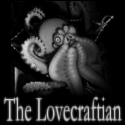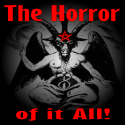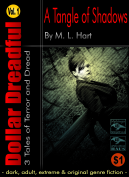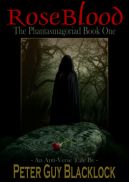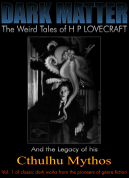 Guy Fawkes, Guy Fawkes, t’was his intent – To blow up the King and Parli’ment.
Guy Fawkes, Guy Fawkes, t’was his intent – To blow up the King and Parli’ment.
Having dealt with the history of Guy Fawkes and the Gunpowder Plot in Part One, I will now turn my attention to how this turn-of-the 17th century English fanatical religious terrorist, wannabe-assassin and potential mass-murderer become the 21st Century’s face of world-wide protest, anarchy and anonymity? There are numerous reasons of course but principle among them are an annual national bonfire night used for the burning of effigies of hated figures, a 19th century historical romance, a late 20th century cult comic book, a 21st century super-hero movie and a loose collective of anonymous activists, hacktivists, anarchists and protest movements.
What is Guy Fawkes Day (or Night) – is it Bonfire Night or Fireworks Night?
In the immediate aftermath of the discovery of the Gunpowder Plot, King James I’s Council allowed the celebration of its thwarting and the saving of the King by the lighting of bonfires without any danger or disorder. The Observance of 5th November Act 1605, also known as the Thanksgiving Act, was passed in Parliament on the 23rd of January 1606 and it made the celebrations a public annual thanksgiving for the plot’s failure. Needless to say Gunpowder Treason Day (as it was at first known) provided Protestant preachers an ideal occasion to deliver anti-Catholic sermons to their parishioners but also it was used as an excuse for sanctioned public festive drinking and processions as well as for the lighting of bonfires and small explosives. Another, more sensible, tradition was started because of the Gunpowder plot (and is still carried out today) – that of searching the cellars of Parliament by the Yeoman of the Guard before its ceremonial opening.

Bonfire Night at Windsor Castle in 1776
In 1626, at the age of 17 and while still an undergraduate at Christ’s College – Cambridge, John Milton wrote his epic poem In Quintum Novembris (On the Fifth of November) about the Gunpowder Plot and featuring Satan as a character – foreshadowing his later, and much more accomplished, Paradise Lost. The name Guy Fawkes does not appear in its verses and in fact, in this highly mytholigised version of the then recent historical events, it is Satan himself who calls a cabal of devils, including the Pope, to carry out the evil plot fated to end in failure and with the God of Protestantism laughing at the futility of the Catholic evildoers. Though essentially a school exercise in Latin the work was first published in a collection of his Latin verse printed in 1645.
By the time of the English Civil War (1642–1651), Gunpowder Treason Day was still being being celebrated but increasingly it was being referred to as simply Bonfire Night. Effigies of hated figures started appearing (usually of Guy Fawkes or the Pope), they were paraded around local areas in masked procession before being set on top of a large bonfire and ceremoniously burnt with the pyre. Not surprisingly, during the English Interregnum (1649-60, the years between the execution of Charles I and the restoration of the monarchy with Charles II) the now less formal annual day of thanks became more a celebration of the saving of parliamentary government and of Protestantism than of the saving of a monarch.
Three-score barrels of powder below – To prove old England’s overthrow;
After the Restoration, Charles II tried to return the celebrations of the 5th to a more formal monarchist purpose but the people of the land were inexorably drawn to the more diverse and anarchistic (but still very much anti-Catholic) elements of the fire festival. Bans on bonfires and fireworks tried to quell the often raucous festivities and on numerous occasions militias were called in to suppress the more boisterous of the commoners’ excesses. When James II (the last Catholic monarch of England) came to the throne in 1685 the attempts to suppress anti-Catholic sentiment moved to the fore-front – but still to little avail.
As the years (and centuries) rolled on Bonfire Night (always its common name) survived various bans of bonfires and fireworks – and many attempts to quell the mayhem caused by commoners, often relishing the anonymity provided by the wearing of a mask, who increasingly saw the event as a release valve for relieving tension and bringing a little chaotic freedom by railing against the often heavily imposed order of the day. By the 18th Century Gunpowder Treason Day had, officially at least, become Guy Fawkes Day with the custom of burning masked effigies of Fawkes and other notorious personalities and perceived enemies of the people (now all increasingly referred to as Guys) remaining a focus of the celebrations.

A masked Guy being paraded on Guy Fawkes Night, 1868.
The 19th Century saw the overtly anti-Catholic aspect of the annual fire festival finally begin to wane, by 1826 British Catholics were allowed to vote again and had been awarded greater civil rights. The focus of the 5th shifted more resolutely to a rebellious vilifying of unpopular celebrity or political figures of the day. And, though organised civil celebrations continued in many villages, towns and cities throughout this period, people also started to have smaller family and friends type celebrations with their own small-scale bonfires (with or without Guys) and the celebratory firing of bought or home-made fireworks. In the run-up to the big night it became common for, often masked, groups of children to roam the streets with there own little effigies ready for the burning, collecting pennies to fund their personal bonfire and fireworks blow-outs. To this day, in the days between Halloween and Bonfire Night, you still get children hanging around outside pubs asking all comers (and usually asking again all leavers) “Penny for the Guy, Mister (or Missus)?” – while proudly displaying their own particular attempt at constructing a barely recognizable humanoid Guy.
As the national anti-Catholic sentiment declined so softened the popular attitudes to Gay Fawkes himself. Despite the fact he sought to overthrow one intolerant religious monarchy and replace it with a another, even more intolerant one, he was increasingly seen in a more sympathetic light. A romantacised rebel supporting the plight of the common people rather than a fanatical and religiously intolerant terrorist. This might largely be due to the publication of the 1840 historical romance Guy Fawkes by William Harrison Ainsworth which cast Fawkes as an adventurous, but tragic, hero who was honour bound to embark on a doomed course of events. Between 1840 and 1878 the hugely popular tale – mixing fictional and Gothic elements in with the historical – was published twice as a serial and seven times as a novel, one of which was a 3-volume set illustrated by George Cruikshank. Almost immediately, versions of Ainsworth’s novel were adapted as stage plays and the now more acceptable character of Guy Fawkes, with the more “commoner-friendly” elements of the Gunpowder plot, even started appearing in pantomimes with the likes of Harlequin and Pantaloon, and went on to numerous appearances in penny dreadfuls and children’s adventure books.
By God’s providence he was catch’d – With a dark lantern and burning match.

Guy Fawkes effigies and collectors, all masked, 1903, by John Benjamin Stone.
Into the 20th century pyrotechnic manufacturers cottoned on quickly to a growing mass market for their goods and their advertisements started to refer to the night of the 5th as Fireworks Night – marking yet another old and popular festival or holiday being co-opted (and sanitised) by the greed of modern commercialisation – even to the point of large numbers of cheap cardboard or paper Guy Fawkes masks being sold to children or “gifted for free” with children’s comics. The softened and more populist characterisation of Guy Fawkes also started appearing in a different kind of light show – the movies. He was depicted on film as early as 1913, played by Caleb Porter in the silent British movie Guy Fawkes and the Gunpowder Plot directed by Ernest G. Batley, and then again in 1923, played by Matheson Lang in another silent picture Guy Fawkes directed by Maurice Elvey. The latter an adaptation of Ainsworth’s influential 1840 novel. Guy Fawkes made regular appearances on British TV in dramas and dramatised scenes for historical documentaries as well as often turning up (in parody) on comedy sketch shows and children’s TV shows. Somewhat bizarrely, the only other movie depiction of Guy Fawkes in the 20th century (that I could find on the IMDB) was played by Bill Maynard in the historical comedy Carry on Henry directed by Gerald Thomas in 1971.
Although a well known and recognisable character in Britain for hundreds of years, Guy Fawkes – as an historical and then fictional figure – barely registered a blip on the cultural RADAR screens of even the ex-colonies let alone the rest of the world. Or at least that’s the way it was until a slow burning fuse was lit by writer Alan Moore and artist David Lloyd in 1982 when the British anthology comic Warrior started the troubled and protracted publication of the pair’s black-and-white cult comic strip – V for Vendetta. Unfortunately Warrior was cancelled in 1985, two episodes short of publishing the complete Moore and Lloyd strip. The mantle was taken up by DC Comics in 1988 with the publication of a ten-issue series that reprinted the Warrior stories in colour and continued the series to completion. Within two years the tale was reprinted in graphic-novel format, in the US by the DC Vertigo imprint and in the UK by Titan Books. In 1999 The Comics Journal ran a poll on “The Top 100 (English-Language) Comics of the 20th Century” and V for Vendetta reached 83rd place.
Set in the late 1990s, V for Vendetta depicts a dystopian and post-apocalyptic near-future Britain ruled as a police state by a fascist regime (and is heavily indebted to George Orwell’s 1984). The titular protagonist, V, is a masked vigilante, anarchist and revolutionary dressed in a stylised Guy Fawkes costume. Starting on Bonfire Night, 1997, the story follows his elaborate, theatrical and explosive campaign to murder his former captors who experimented on him, bring down the fascist government that allowed it, and convince the people to take back the power and rule themselves… all while training a young protégé, Eve, and all by the Bonfire Night of 1998. Aswell as continuing the re-invention of the fictional Guy Fawkes character started by Ainsworth in 1840, it repackages and updates the whole story of the people’s revolutionary into a dark, politically and intellectually astute, Batman-like super-hero story fit for mass consumption and world wide appeal. All that was needed was a slick, glossy big-budget movie adaptation. It came in 2006.
Directed by James McTeigue, written and produced by The Wachowski siblings and starring Hugo Weaving as V, with Natalie Portman as Eve and Stephen Rea as Finch, the detective leading the investigation into V’s activities… oh, and Clive Ashborn as Guy Fawkes himself – seen in the (not exactly accurate) opening sequences looking back at the historical character. Although still set in Britain, Warner Brothers‘ movie of V for Vendetta transposes the timeline to the late 2020s and in many ways Americanises the political conflict by switching it from a very British narrative of anarchism against fascism to a more American style conflict of liberalism against right-wing neo-conservatism. The anarchistic and morally ambivalent aspects of V’s character are toned down to make him a more acceptable hero figure for American audiences. It was less a criticism of Thatcherite politics in early 80s Britain and more a criticism of the Bush-era politics of America in the early 2000s. That said, it is still a largely faithful adaptation of Moore and Lloyd’s comic book and although Moore disowned all connections with it (as he has done with all big screen adaptations of his work) Lloyd embraced it saying, “if you enjoyed the original and can accept an adaptation that is different to its source material but equally as powerful, then you’ll be as impressed as I was with it”. The film renewed interest in Moore and Lloyd’s original story, and sales of the graphic novel – now available in hardback – rose dramatically in the USA.
The movie, like the comic book before it, initially met with a very mixed critical reception and its controversial story line dealing with themes of anarchism, terrorism, totalitarianism, religious and racial intolerance and homophobia has proved problematic for many sociopolitical groups. right-wing groups complained of its apparent promotion of anarchism and terrorism while anarchist groups complained that it had watered down the original’s political message for the sake of commercial Hollywood violence and flashy special effects. But over time the movie, like the comic, has become a popular favourite and it too has achieved a certain level of cult status. In 2008 Empire magazine named the film the 418th greatest movie of all time.
Holla boys, Holla boys, let the bells ring – Holla boys, Holla boys, BURN ‘im ‘n’ sing!

Members of the group Anonymous wearing Guy Fawkes masks at a protest against the Church of Scientology in London, 2008.
The movie V for Vendetta was released in the USA on the 17th of March, 2006. Merchandising and promotional items included replicas of the Guy Fawkes mask used in the movie. Within a month these stylised Guy Fawkes masks based on David Lloyd’s original design (or close approximations to it) started to be worn by protesters in demonstrations. On the 17th of April that year, outside the New York City offices of Warner Brothers and DC Comics, the odd spectacle arose of anarchist freegan demonstrators wearing Guy Fawkes masks – protesting the perceived misrepresentation of the Anarchist movement in the movie – being met with by a counter demonstration of libertarians wearing Guy Fawkes masks (possibly supplied by Warner Brothers themselves) – protesting the protesters.
Late in September of 2006 a minor Internet meme of a stick-figure known as “Epic Fail Guy” (or EFG) started appearing on the online message-board and image-board 4chan. Very soon EFG was wearing a V for Vendetta style Guy Fawkes mask – presumably because Guy Fawkes failed in carrying out the Gunpowder Plot (an epic fail indeed) – and the internet meme started to get more traction and spread out of its 4chan confines. Anonymous, the ad-hoc group of Internet users who are often associated with various hacktivist operations, also has its origins in 4chan, which launched in late 2003 as an anonymous online community that doesn’t require registration and where all users not choosing to use a nickname are displayed as “Anonymous” – and thus perpetuating the notion that users of the site are part of a group called Anonymous – not a single person but a collective (or hive) of users.
In January 2008 the online (or cyberspace) collective known as Anonymous, started using the V for Vendetta Guy Fawkes mask in its first offline, or real world (meatspace), operation Project Chanology – a series of protests directed against the Church of Scientology. The use of these masks by Anonymous was ostensibly a reference to EFG, they were using it to suggest that Scientology was an epic fail, but it seems more likely that there was a much more practical purpose – preventing the famously litigious and snap-happy scam “Church” from photographing faces and identifying individuals. As the protests continued, more and more protesters started using the masks and it soon became a symbolic “face” for the anonymous group online as well as in the real world. Alan Moore, a self professed anarchist, said in an interview with Entertainment Weekly in 2008, “I was also quite heartened the other day when watching the news to see that there were demonstrations outside the Scientology headquarters over here, and that they suddenly flashed to a clip showing all these demonstrators wearing V for Vendetta Guy Fawkes masks. That pleased me. That gave me a warm little glow.”
The V for Vendetta Guy Fawkes mask was adopted by many more protest groups in the following years. In Britain, on 23 May 2009, a group protesting the MPs’ expenses scandal exploded a fake barrel of gunpowder outside Parliament while wearing the masks. The mask became very popular internationally with the Occupy Movement that evolved from the Occupy Wall Street protests in 2011. It appeared in Poland in January 2012 during protests against the signing of the Anti-Counterfeiting Trade Agreement, a multinational treaty for the purpose of establishing international standards for intellectual property rights enforcement. In June 2012 demonstrators wore the mask in Mumbai, India, protesting against the Indian Government’s censorship of the Internet and in 2013 a number of Persian Gulf states were forced to impose an ultimately futile ban on the sale of the mask as it started appearing in demonstrations that were part of the ongoing Arab Spring movement. It has been used in numerous anti-government protests in countries as diverse as Thailand, Egypt or Turkey and Brazil or Venezuela.
The Guy Fawkes mask also continued as a mainstay symbol for Anonymous online during this time. Although, in the wake of the Chanology operation of 2008, in which DDoS (Distributed Denial of Service) attacks were performed on Scientology websites by hacktavists, there was a period of infighting within the hacking movement, between the more politically minded hackers and the trollish elements who sought to provoke simply for the LOLs. Membership of the loose and amorphous coalition of online hacking groups seemed to diminish, then in September 2010, Operation Payback was declared against various copyright enforcement entities in protest against their activities to prevent the widespread pirating of copyrighted media online. Later that year it was expanded to include Operation Avenge Assange, targeting various parties including PayPal that were percieved as attacking the WikiLeaks organization. Fourteen less experienced hackers, the PayPal 14, were arrested by the FBI on charges of conspiring to disrupt access to the online payment service.
Anonymous launched various hacking operations against Middle East governments in support of the Arab Spring uprising of 2011 by targeting the government related websites of Tunisia, Bahrain, Egypt, Libya and Jordan among others. Anons also helped dissidents share videos online about the uprising. Between 2011 and 2012 several attacks by Anonymous targeted organizations accused of homophobia, including the website belonging to the Westboro Baptist Church. They also hacked the site of Ugandan Prime Minister Amama Mbabazi in retaliation for Uganda’s consideration of an anti-homosexuality law permitting capital punishment. They attacked Sony in retaliation for trying to stop hacks of the PlayStation 3 game console in April 2011 and they attacked BART in San Francisco during August, an operation they dubbed OpBart in response to a decision to cut cellular phone service to prevent an antipolice protest in San Francisco.

An Anonymous spokesperson in one of their online videos.
In October 2011, Operation DarkNet was launched, a series of Ops targeted at websites proliferating child pornography, and the details of suspected peadophiles (including names, emails and IP adresses) were released. In January 2012, in response to the U.S. Deptartment of Justice shutting down the file-sharing site Megaupload on allegations of copyright infringement, Anonymous started a wave of DDoS attacks on U.S. government and other copyright organization websites. In April 2012, Anonymous hacked numerous Chinese government websites to protest the treatment of their citizens. They urged people to fight for justice, fight for freedom, and fight for democracy. Later that year the hacktavist collective persued a number of revenge porn sites and their founders with Operation Anti-Bully. It seemed by this point that the politically minded hackers of Anonymous, those willing to take a moral stand, had persevered over the trolls of the LOLs brigade, at least as far as getting noticed was concerned.
A more detailed and thoroughly up-to-date history of the various operations undertaken by the group Anonymous can be found HERE, including their most recent OPRussia, targeting the Russian state and its propaganda machine after the invasion of Ukraine in 2022. I think we can best sum up this article with the words of the mask’s designer, David Lloyd:
“The Guy Fawkes mask has now become a common brand and a convenient placard to use in protest against tyranny – and I’m happy with people using it, it seems quite unique, an icon of popular culture being used this way. My feeling is the Anonymous group needed an all-purpose image to hide their identity and also symbolise that they stand for individualism – V for Vendetta is a story about one person against the system.”
Buy William Harrison Ainsworth’s Guy Fawkes novel at Amazon.com or at Amazon.co.uk
Buy the V for Vendetta graphic novel at Amazon.com or at Amazon.co.uk
Buy the V for Vendetta movie on DVD at Amazon.com or at Amazon.co.uk
Buy the V for Vendetta movie on Blu-ray at Amazon.com or at Amazon.co.uk
Buy the V for Vendetta Guy Fawkes mask at Amazon.com or at Amazon.co.uk.
Brought to you by Harbinger451.
Copyright © 2016 (Updated 2022) Harbinger451 – All Rights Reserved



